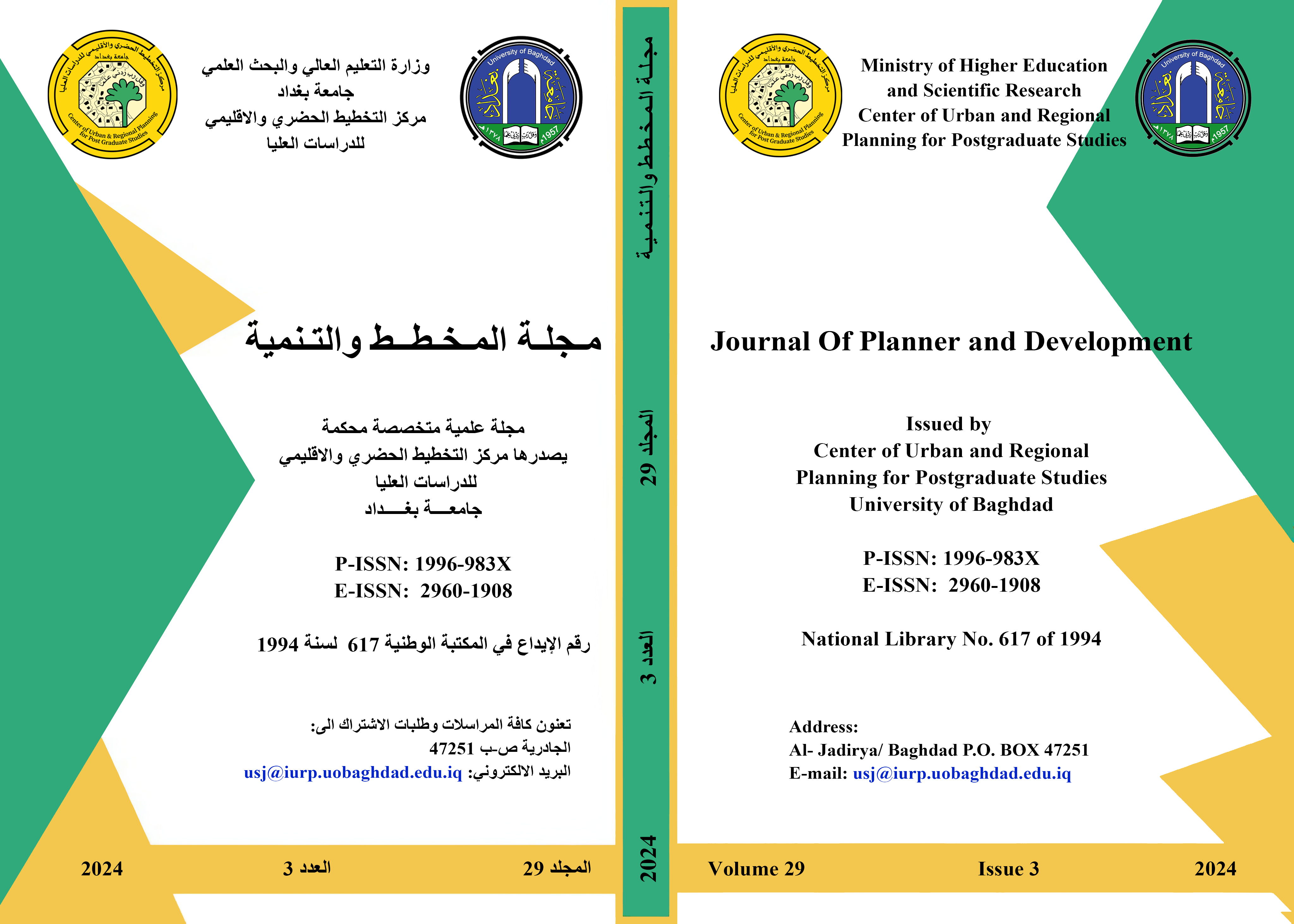Indicators of the efficiency of public urban spaces
Keywords:
functional efficiency, public urban space, urban agglomeration, indicators of efficiency of urban spaceAbstract
The research aims to shed light on the most prominent planning and design indicators affecting the functional efficiency of urban spaces in cities, because those indicators play a very important fundamental role in studying the efficiency of spaces, those spaces that are the basic element of movement in the city as well as in determining the shape of the city and its aesthetics, and because spaces as a general concept in the planning field are part of the urban fabric of any city, whether large or small, they form the natural outlet of this city and are one of the most important physical components in the city that have visual (environmental) and aesthetic effects, so research to study everything related to these spaces, including components, coordination elements, requirements, activities and components that raise the efficiency of space, as well as a comprehensive study of the design foundations and Planning Standards, as well as their patterns and classifications, to reach the most prominent indicators that affect the efficiency of these spaces.
The research will deal with the study of some international models in this field, and therefore the research has reached the identification of a set of functional requirements that can contribute to the conclusion of functional values for urban spaces within the city, expressed in indicators.
One of the most prominent conclusions reached by the research is that the efficiency of spaces cannot be reached without the development of indicators, and that these indicators were not reached until after identifying the importance of space, its components, activities, requirements, patterns and elements, and then the research reached many sub-indicators were collected and placed under the name of four main indicators as follows ( social interaction, accessibility, spatial organization and finally spatial compatibility between spaces and user behaviors).



